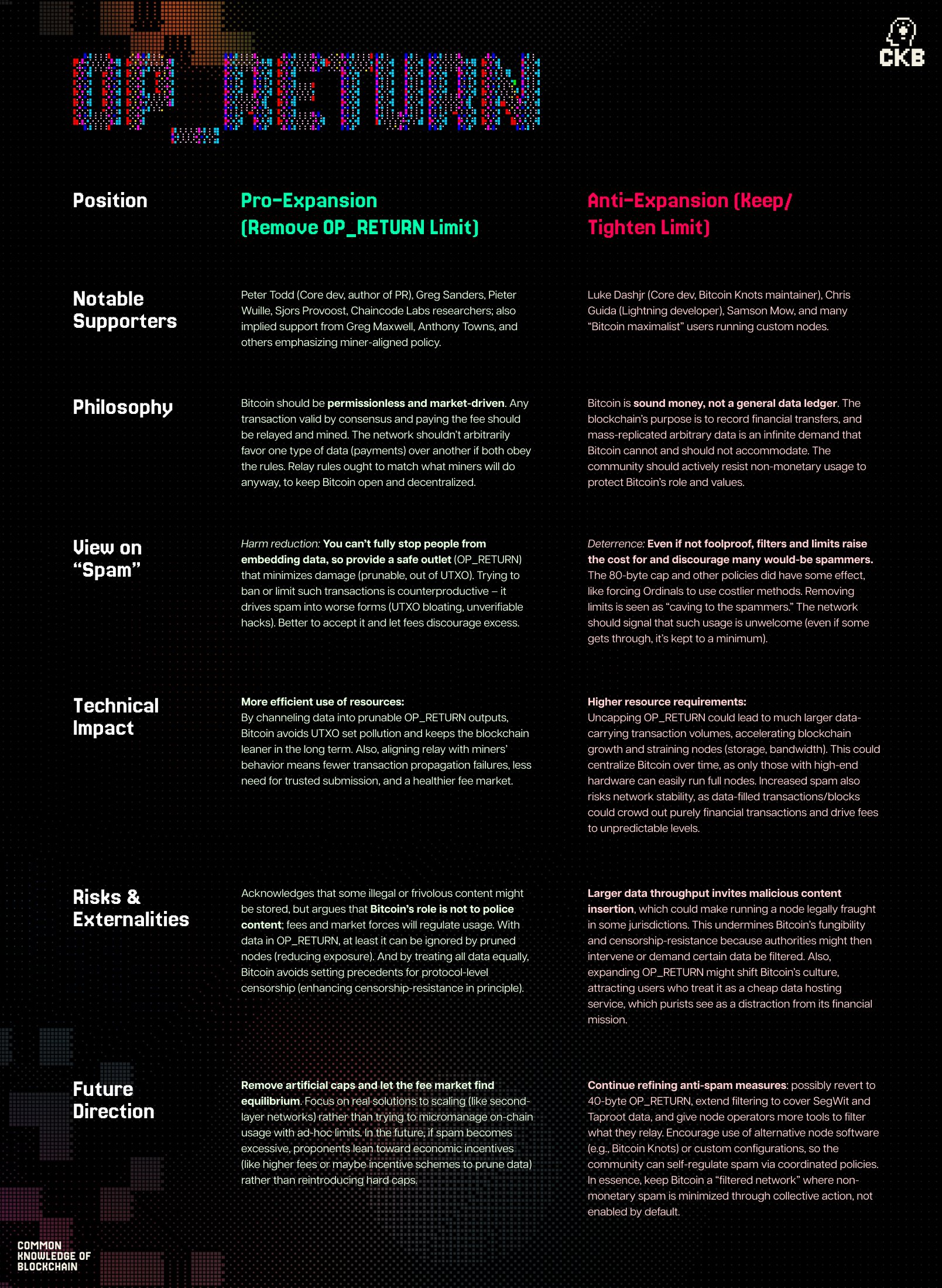Bitcoin Core v30 Triggers Firestorm with OP_RETURN Capacity Hike
Developers just flipped the script—Bitcoin''s latest upgrade now lets OP_RETURN carry 50% more data. Cue the usual suspects: maximalists cheering ''innovation,'' regulators sweating bullets, and TradFi dinosaurs muttering about ''niche use cases.''
The real kicker? This ''groundbreaking'' change still can''t fix Bitcoin''s real limitation—Wall Street still doesn''t know whether to FUD it or ape in.
Bitcoin Core 30 Expands OP_RETURN Limit, Igniting Community Backlash
OP_RETURN, the instruction to embed data within Bitcoin transactions, has traditionally been tightly restricted to prevent blockchain bloat.
The newly approved change unlocks massive capacity for storing crypto inscriptions and other on-chain data directly through bitcoin Core, without requiring protocol workarounds.
Supporters argue that this could improve the infrastructure for Bitcoin LAYER 2 solutions, decentralized identity systems, and BTC-anchored Web3 projects.
Based on feedback on X (Twitter), it is controversial, with the increase reigniting DEEP tensions within the Bitcoin community. Specifically, there is disagreement between those favoring innovation and others prioritizing minimalism and node decentralization.
Bitcoin advocate Jimmy Song criticized the update, stating it WOULD worsen UTXO (Unspent Transaction Output) bloat by enabling more on-chain spam.
OP_RETURN outputs greater than 83 bytes will increase significantly, UTXO bloat will keep getting worse and there will be more garbage on chain.
This is going to age like a bad tattoo. pic.twitter.com/hUTpg8a5NM
Meanwhile, other users echoed concerns about centralization and censorship resistance.
“You ignore community consensus, you lose trust. Since Bitcoin Core’s OP_RETURN fiasco, Bitcoin Knots has surged from 2% to 11% of nodes. That’s what happens when contentious changes are rammed through,” the user wrote.
The ideological divide comes as users criticize what they see as an agenda driven by large development sponsors.
“Bitcoin Core (Chaincode/Spiral) just merged removal of the OP_RETURN filter to be released later this year in v30. This marks the end of ‘Bitcoin Core’ being the trusted reference client if it wasn’t already clear. It has been overtaken by shitcoin enablers,” another user posted.
(Chaincode/Spiral) just merged removal of the OP_RETURN filter to be released later this year in v30. This marks the end of ‘Bitcoin Core’ being the trusted reference client if it wasn’t already clear. It has been overtaken by shitcoin enablers,” another user posted.

Victory for Reformists, but Critics Warn of Bloat, Centralization, and Trust Erosion
The reformist push for a larger OP_RETURN has been brewing since Peter Todd’s proposal in late April, which caused a rift between developers and the broader Bitcoin community.
Todd warned of the risks of long-term centralization and questioned whether Bitcoin’s Core values were being sacrificed for short-term flexibility.
According to Peter Todd, formalizing higher limits would reflect existing practices and benefit use cases like sidechains and cross-chain bridges.
“The restrictions are easily bypassed by direct substitution and forks of Bitcoin Core,” Todd noted in his GitHub comments.

Supporters of the OP_RETURN expansion argue that fears of bloat and spam are overblown. They suggest that with appropriate fee markets and filtering mechanisms, Bitcoin can remain secure while enabling broader use cases.
Further, some believe this change is necessary to maintain Bitcoin’s relevance in an increasingly competitive market.
Notably, this development arrives barely a day after Bitcoin CORE faced backlash over changes to its transaction relay policy.
As BeInCrypto reported, this relay change has already fueled accusations that the project is drifting away from its decentralist roots. Critics perceive the MOVE as limiting accessibility and favoring well-connected nodes.
NACK
The goals of transaction relay listed are basically all wrong. Predicting what will be mined is a centralizing goal. Expecting spam to be mined is defeatism. Helping spam propagate is harmful.
This OPED contradicts itself, presenting out of band relay as both negative and…
Despite the backlash, Bitcoin Core remains the most widely used protocol implementation. Recent shifts in node distributions, such as the rise of Bitcoin Knots, signal a growing appetite for alternatives among node operators.
It also accentuates purists’ stance, seeing recent updates diluting Bitcoin’s original design philosophy.
With version 30 on the horizon and ideological battles intensifying, Bitcoin appears to be at another turning point. The transition could define Bitcoin’s path as a programmable, multi-layered technology.

